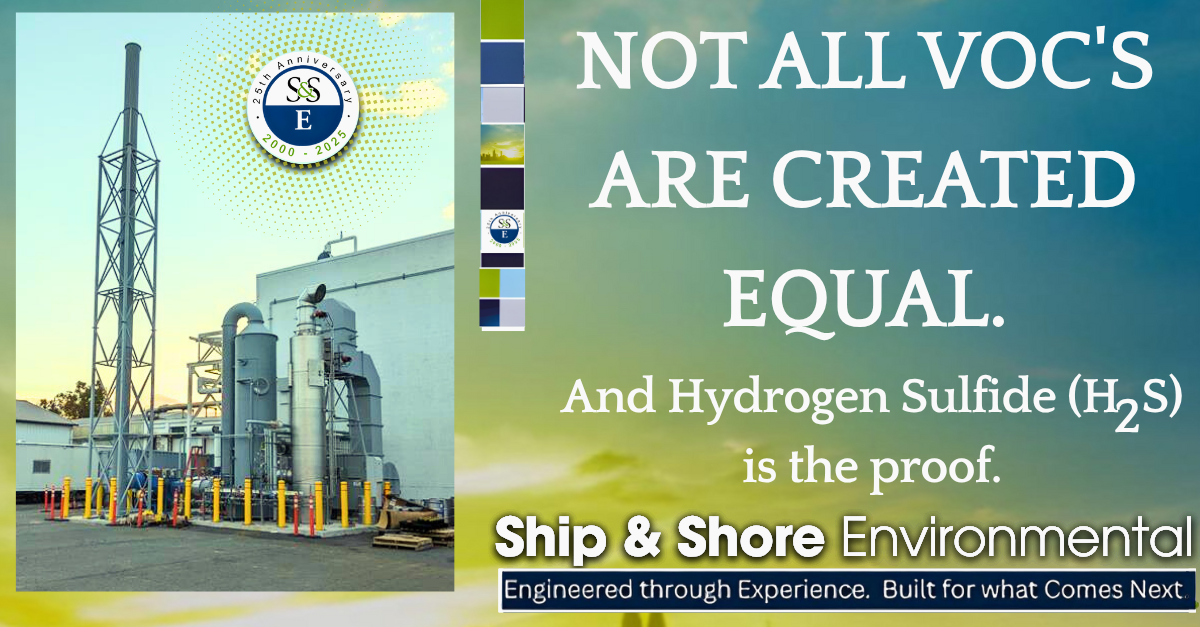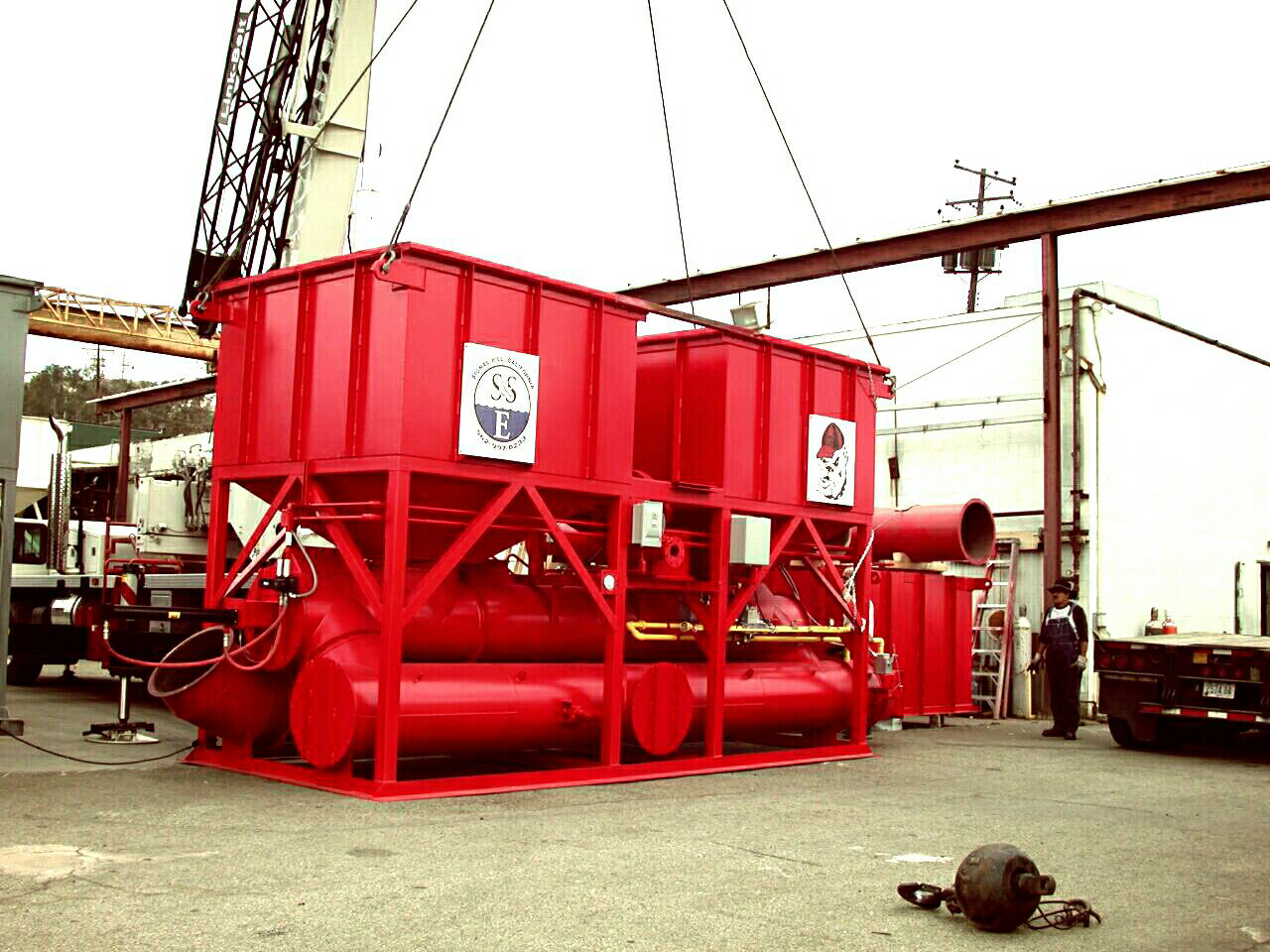
Techtalk: H₂S in VOC Streams: Why One Contaminant Can Ruin the Whole Equation
August 6, 2025 5:00 am#Techtalk: H₂S in VOC Streams: Why One Contaminant Can Ruin the Whole Equation
8.6.2025
Not all VOCs are created equal — and hydrogen sulfide (H₂S) is the proof.
When this toxic, corrosive, and highly odorous gas shows up in your emission stream, it doesn’t just complicate permitting — it compromises the performance of your abatement system.
At Ship & Shore Environmental, we’ve been engineering advanced clean air solutions for over 25 years. When it comes to mixed-contaminant streams, we don’t guess. We design for exact chemistry — and H₂S requires precision.
The Hidden Risk of H₂S in Your Process
Hydrogen sulfide often sneaks into VOC streams in industries like:
- Petrochemicals & refineries
- Pulp & paper
- Food processing
- Wastewater treatment
- Composite or resin manufacturing
- Pharmaceutical
On its own, H₂S is a problem. But in a mixed VOC stream, it can cause:
- Catalyst deactivation
- Corrosive damage to ducting, media beds, or heat exchangers
- Unexpected byproducts when oxidized at high temperatures
- Damage to RTO ceramic media
- False readings in stack testing due to interference
Why Standard RTOs/DFTOs Aren’t Built for Sulfur
Your regenerative thermal oxidizer (RTO) may be robust, but H₂S can shorten its lifespan drastically. Without pretreatment or material upgrades, you’re risking:
- Ceramic media fouling
- Acid gas formation
- Hot spots or localized corrosion
- Odor control failure — a major permitting red flag
Proven Solutions: How We Remove or Neutralize H₂S
At S&SE, our engineering team evaluates each case based on:
- Inlet concentrations and flow rates
- VOC and H₂S interaction under thermal conditions
- Regulatory thresholds (e.g. BACT, RACT, NESHAP, SCAQMD rules)
Common mitigation strategies include:
Scrubber + RTO Combination
H₂S removed with chemical or biological scrubbing prior to thermal oxidation
Corrosion-Resistant Upgrades
Hastelloy, FRP, or specialty coatings on internal components
Dedicated Sulfur Trap or Catalyst Beds
For continuous H₂S capture, especially in petrochemical streams
Media Selection Adjustments
Sulfur-resistant ceramic or structured media to prolong system life
Results in the Field
Case Study Snapshot:
A composite manufacturer with elevated H₂S and VOCs faced repeated odor complaints and a failing oxidizer. S&SE installed a two-stage system: a chemical scrubber to neutralize H₂S upstream, followed by a 30,000 SCFM RTO.
Result:
- 99%+ VOC and H₂S destruction
- Elimination of odor complaints
- Permit compliance restored
The Bottom Line
VOC compliance is just the beginning.
If you’re ignoring H₂S in your emission stream, you’re gambling with system longevity, compliance, and public health. At S&SE, we design abatement systems that account for every molecule — not just the easy ones.
[/vc_column_text][/vc_column][/vc_row]
Categorised in: RTO

